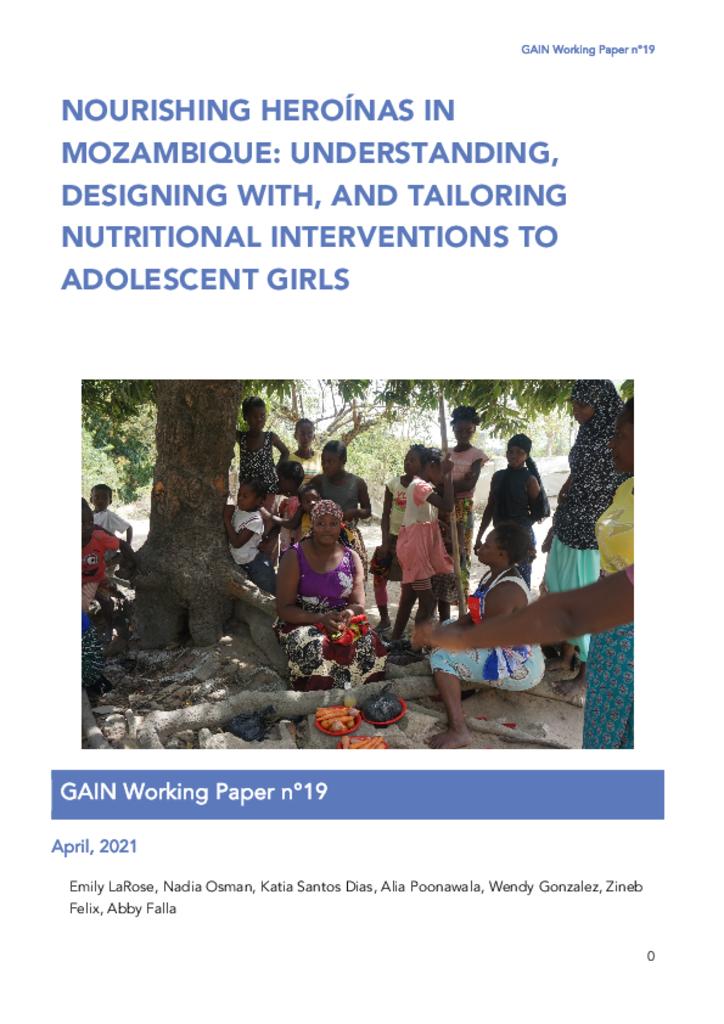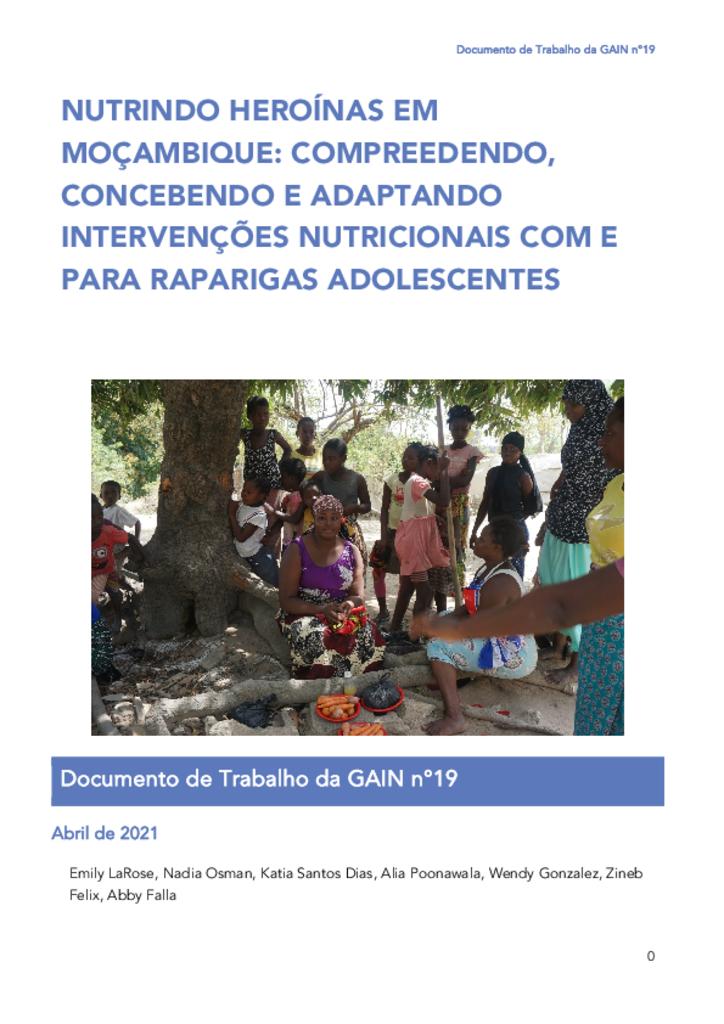Adolescence is a time of rapid physical, cognitive, social, and emotional development that sets the foundation for health and provides an opportunity to improve life chances. Mozambique has a large and growing population of young people, but their health and social indicators are poor, especially for girls. Food insecurity is widespread, there is limited dietary variety, low intakes of fruits, vegetables and protein-rich foods, and a heavy reliance on starchy foods. This contributes to a perpetual cycle of malnutrition and poverty.
Creating meaningful and contextually relevant nutrition-focused behaviour change interventions is challenging. Good practice acknowledges the need to include adolescents in designing programmes that affect them and their peers. However, little time, effort, and money have been invested in designing effective and relevant nutritional interventions for very poor adolescent girls. Human-centred design (HCD) is an innovative approach that brings users into the design process to co-create solutions for complex problems, ensuring that new initiatives are relevant and appropriate and accurately reflect participants’ realities. HCD supports contextual learning through exploration, ideation, and iteration.
This paper describes how, together with partner agencies, community members, and adolescents, the Global Alliance for Improved Nutrition sought to apply the principles of HCD to develop a ready-to-pilot test package of culturally and contextually appropriate interventions to improve dietary habits of very low-income adolescent girls in Mozambique.
There were numerous challenges to improving nutrition in this context, including family resource limitations, limited supply and access to nutritious and safe foods, low literacy levels, adolescent girls’ domestic responsibilities, and engaging girls with little agency. The two final interventions, the Heroínas Game and the Cooking Academy, were developed with sensitivity to these factors.
The results of the pilot are forthcoming. With significant contributions by the girls and their influencers in the HCD process, these interventions offer a promising opportunity to improve dietary habits of adolescent girls.

